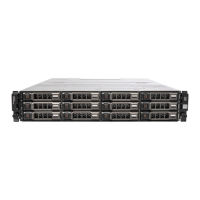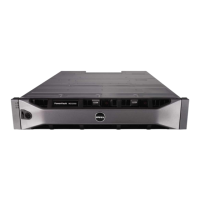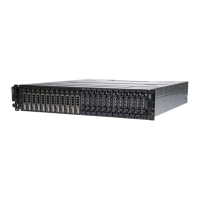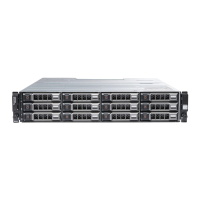8 Introduction
Cluster Storage
Table 1-2 provides the configuration requirements for the shared storage
system.
NOTE: RAID 0 and independent disks are possible but are not recommended for a
high-availability system because they do not offer data redundancy if a disk
failure occurs.
NICs (public and
private)
At least two NICs: one NIC for the public network and another
NIC for the private network.
NOTE: It is recommended that the NICs on each public network are
identical and that the NICs on each private network are identical.
Internal Disk
Controller
One controller connected to internal disks for each node. Use any
supported Redundant Array of Independent Disks (RAID)
controller or disk controller.
Two physical disks are required for mirroring (RAID 1) and at least
three are required for disk striping with parity (RAID 5).
NOTE: It is recommended that you use hardware-based RAID or
software-based disk-fault tolerance for the internal drives.
Table 1-2. Cluster Storage Requirements
Hardware
Components
Minimum Requirement
Supported storage
systems
One Dell PowerVault MD3200i or MD3220i RAID enclosure.
Up to seven Dell PowerVault MD1200 and MD1220 expansion
enclosures with a maximum of 96 disks.
Power and cooling
requirements
Two integrated hot-swappable power supply/cooling fan
modules.
Physical disks At least two physical disks in the PowerVault MD3200i or
MD3220i RAID enclosure.
Multiple clusters and
stand-alone systems
In a switch-attached configuration, clusters and stand-alone
systems can share one or more PowerVault MD3200i or
MD3220i systems.
Table 1-1. Cluster Node Requirements
(continued)
Component Minimum Requirement
book.book Page 8 Monday, June 21, 2010 1:45 PM

